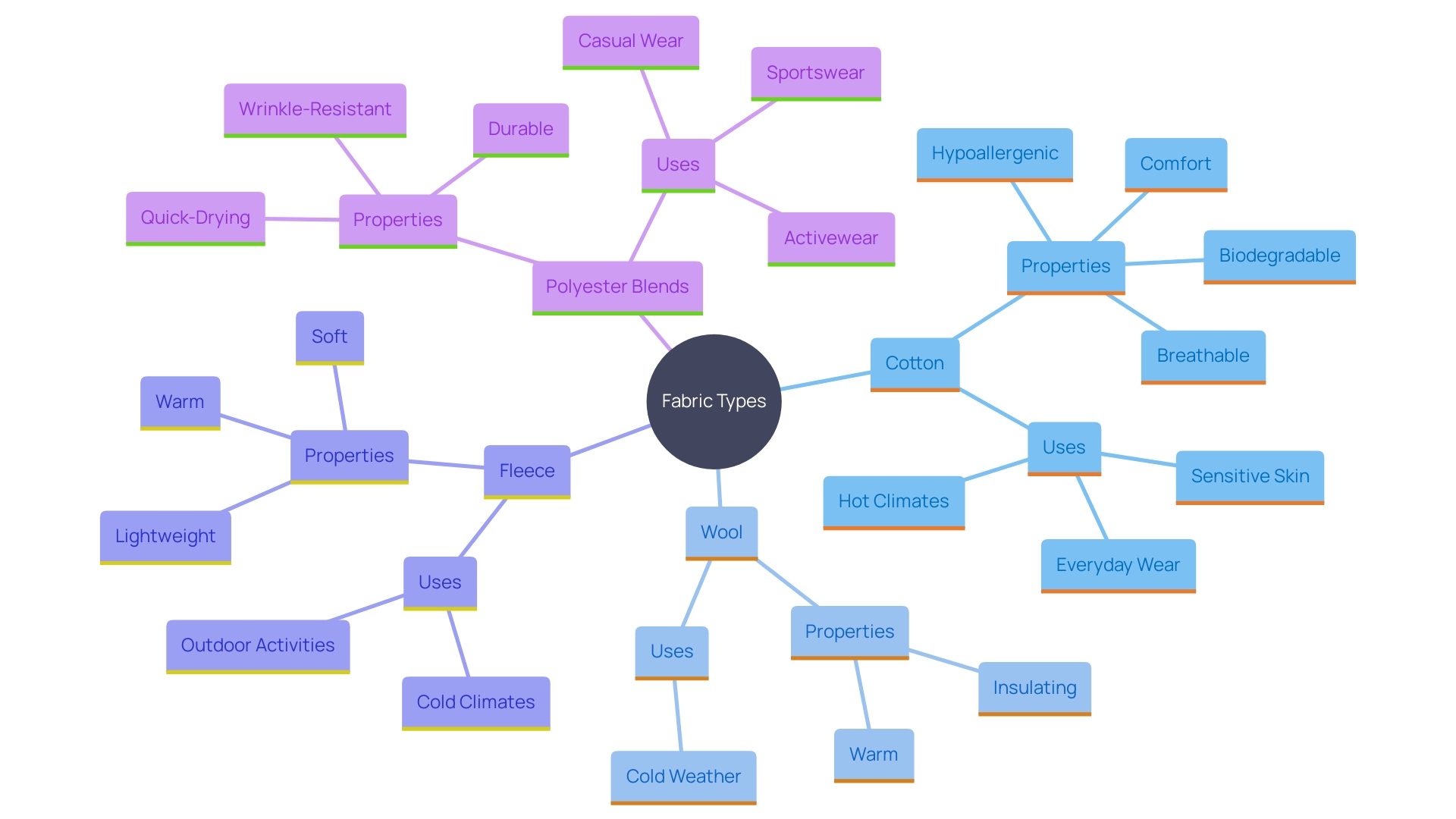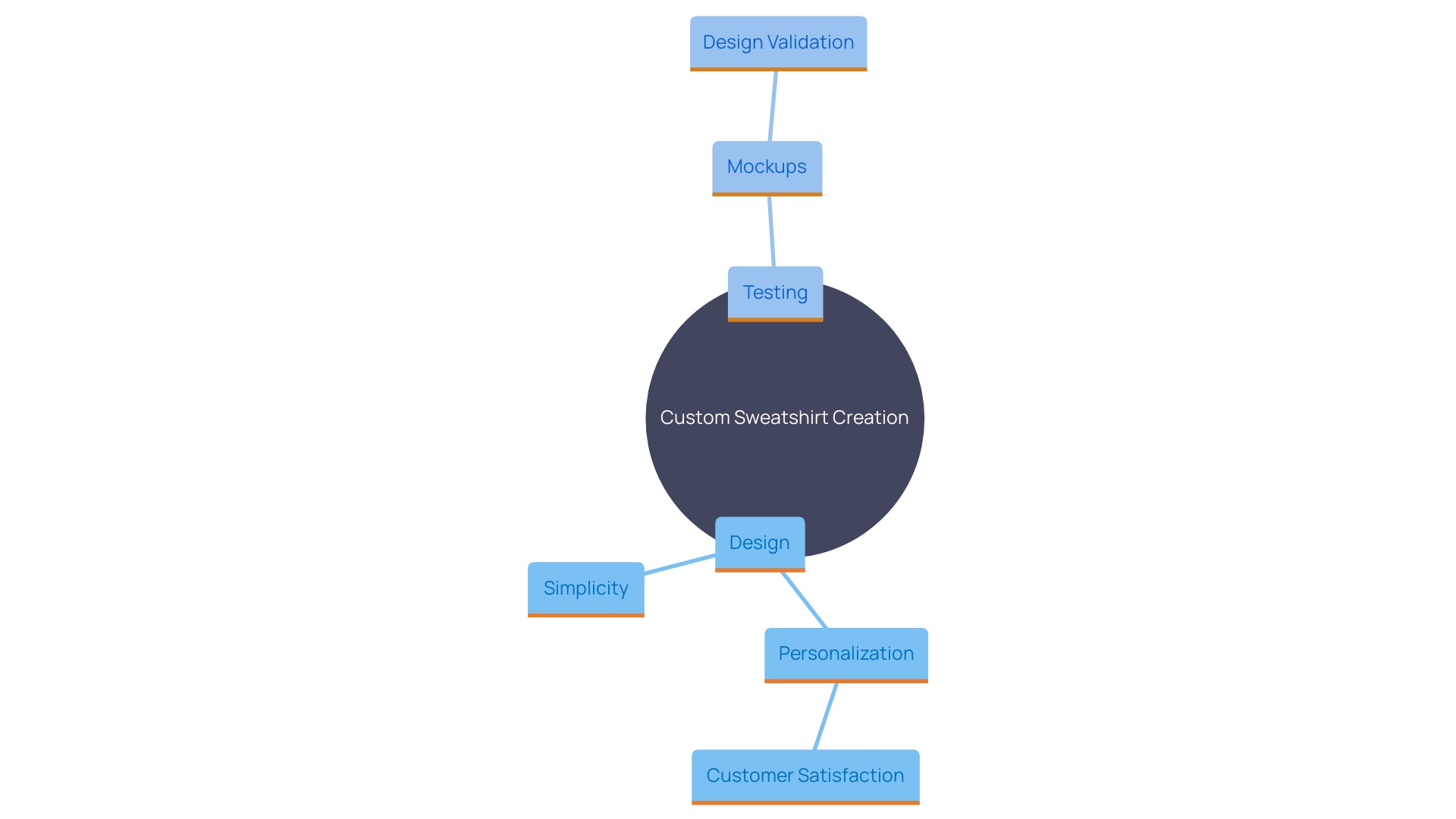Introduction
Creating custom sweaters is an art form that blends creativity with practical considerations. Whether it's for a team, a promotional event, or a personal gift, the journey begins with choosing the right material. Cotton remains a favorite for its softness and breathability, while fleece offers warmth, and polyester blends cater to athletic needs with moisture-wicking properties.
Beyond material, the design process itself requires a deep understanding of the message and audience, drawing inspiration from real-world examples and emphasizing simplicity and focus. Color selection is another crucial element, with the power to evoke emotions and create lasting impressions. Effective custom sweater designs prioritize clarity and personalization, ensuring that the final product not only looks great but also resonates with the intended audience.
With these considerations in mind, creating a custom sweater that is both meaningful and memorable is within reach.
Choosing the Right Material for Custom Sweaters
Selecting the appropriate material for your personalized garment is crucial to attaining the ideal blend of comfort, durability, and style. Cotton remains a favorite due to its softness, breathability, and hypoallergenic properties, making it ideal for everyday wear, especially in warmer climates. According to a comprehensive overview, cotton is biodegradable and environmentally friendly, adding to its appeal. If you're looking for warmth, fleece is an excellent option, providing superb insulation and a cozy feel, perfect for colder weather. For athletic or performance-oriented garments, polyester blends are a top choice. These fabrics wick moisture and dry quickly, making them practical for active wear. As noted by textile experts, the benefits of different fabrics can vary widely, depending on their properties and intended uses. Ultimately, your selection of fabric should correspond with the garment's intended use and desired aesthetic to ensure satisfaction and longevity.

Designing Custom Sweaters: Key Considerations
Initiating a creative journey requires a deep understanding of the message you want to communicate and the audience you aim to reach. Think about the context in which the custom sweatshirt will be used—whether it's for a team, a promotional event, or a personal gift. The layout should not only reflect the occasion but also be visually captivating.
Take inspiration from real-world examples, such as the collaboration between Predators Graphic Designer Tayshaun Hassell and designer Sales, who explored Black culture through their work. Their creative process began with research and was influenced by the NBA's ‘City Edition’ uniforms, which accurately represented their respective cities. This approach allowed them to create a jazz-inspired, geometric tapestry of shapes, colors, and textures that celebrated contemporary Black culture.
When developing your creation, prioritize transparency, clarity, and honesty. Make sure that any text or graphics are easily recognizable and resonate with your intended audience. By doing so, you'll nurture trust and enhance a positive user experience, similar to how effective urban planning in cities like Turin can inspire and captivate.
Remember, simplicity and focus can often lead to the most powerful creations. Whether you're producing for an organization, team, or individual, your objective should be to create something that's both meaningful and memorable.
Color Selection and Contrast
Color is a powerful tool in crafting the perfect custom sweatshirt creation, significantly impacting how your brand or personal style is perceived. Considerate hue selections can evoke specific emotions and create a lasting impression. For instance, using differing hues like light text on a dark backdrop can improve readability and make your design more eye-catching. Complementary hues can also make key elements stand out, ensuring they catch the eye.
Trying out various palette options can assist you in discovering the ideal combination that corresponds with your intended message and aesthetic. The appropriate hues not only attract interest but also communicate your brand's identity effectively. In marketing materials, hue plays a crucial role in setting the tone, improving readability, and making your message more memorable.
In the realm of branding, hues can alter how a product is viewed, as demonstrated in the case of Forte Whey. Their palette was meticulously chosen to evoke innovation and boldness, making a significant impact at the point of sale. This considerate method regarding hue can likewise enhance your custom sweatshirt design, transforming it from merely an article of clothing to a declaration.
Jill Morton, a renowned consultant for hues, emphasizes the importance of selecting shades that reflect the brand's core values. She observes, 'Individuals require assistance selecting the most suitable hue for their business – whether it be the logo, the product, a website, and numerous other aspects.' This understanding emphasizes the necessity for a strategic method to color choice, ensuring your personalized garment connects with your audience and improves your overall brand identity.
Tips for Creating Effective Custom Sweater Designs
To enhance the effect of your custom sweatshirt creation, prioritize simplicity and clarity. Overloading your creation with too many elements can dilute its message and reduce its overall effectiveness. Instead, focus on using high-quality graphics and text that align with your theme. Pay attention to the arrangement of your elements; center-aligned graphics often convey a polished look, while asymmetrical layouts can inject a modern flair.
Incorporating personalization into your creations can significantly enhance customer satisfaction. A recent study by Medallia revealed that 61% of consumers are willing to spend more with companies that offer a customized experience. However, only 26% of retail consumers report experiencing high levels of personalization, highlighting a significant opportunity for brands to improve and capture more revenue.
Testing your creations on mockups before production is a crucial step. This allows you to visualize the final product and make any necessary adjustments, ensuring the end result meets your expectations. By embracing personalization and focusing on design clarity, you can create standout custom sweatshirts that resonate with your audience and drive higher satisfaction.

Conclusion
Creating custom sweaters involves a thoughtful blend of material selection, design philosophy, and color strategy. The choice of fabric is foundational, with options like cotton, fleece, and polyester blends catering to different needs and preferences. Each material serves a unique purpose, whether it’s the softness of cotton for everyday wear or the moisture-wicking properties of polyester for athletic use.
The design process goes beyond mere aesthetics; it requires a clear understanding of the intended message and audience. Drawing inspiration from real-world examples can lead to designs that are not only visually appealing but also culturally resonant. Prioritizing clarity and simplicity in design ensures that the message is effectively communicated and appreciated by the audience, fostering a deeper connection.
Color selection plays a pivotal role in the overall impact of the sweater design. Thoughtful choices can evoke emotions and enhance brand identity, making the design memorable. Experimenting with color palettes and understanding the psychology behind color can transform a simple garment into a powerful statement piece.
Ultimately, effective custom sweater design is about striking a balance between creativity and practicality. By focusing on clarity, personalization, and strategic color choices, it is possible to create custom sweaters that are not only stylish but also meaningful and impactful. Embracing these principles can lead to designs that resonate with the audience, ensuring that each piece stands out in a crowd.




